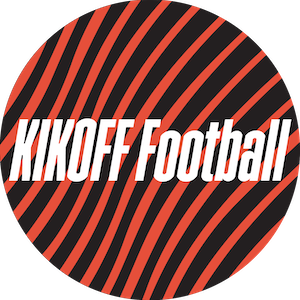Creating a learning environment - Part 1
The principal philosophy of youth sport should be to create environments, in training & matches, that are conducive to lifelong learning and enjoyment of the sport. Partaking in youth sport is not just the opportunity to learn skills that will benefit individual development within sport, but the opportunity to learn skills that can be applied to life outside of sport as well.
At KIKOFF, we believe there exists a conflict between how children learn, and how “elite” club / academy programmes are designed to work. Despite a complete overhaul, in recent years, of coaching methodology and philosophy across Australia, many “elite” clubs / academy programmes are not designed to meet children’s needs, but instead, designed to meet adult ambitions and expectations. Truthfully, wherever early talent selection, poaching of exceptional players and a “survival of the fittest” agenda pervades, long-term player development will continue to circle the plug-hole.
It’s true that the solution to this problem has multiple facets, and it’s truer still that we need a conscious and collective effort to address it. Nevertheless, I believe a large, and achievable part of the solution lies in our willingness as coaches, to ask questions, seek evidence and return control of the learning process to the players themselves. Achieving this requires altering our approach and tweaking the training environment in a way that promotes and consolidates implicit learning.
Fine-tuning the training environment
To create and sustain a training environment that is conducive to learning, is to create one that is akin to the performance environment itself; dynamic, unpredictable and rich with appropriate stimuli.
The purpose of training is to increase an athletes’ well of experience of different stimuli, so they’ll know the right decision to make in any situation. In essence – we want to make the unpredictable world of football predictable.– A. Katwala (2017)
Let’s be clear though, creating context and unpredictability does not mean throwing a ball into a crowd of players and letting them work things out. It’s about breaking the game down into digestible chunks* without losing sight of the bigger picture.
This may be difficult for coaches from a more traditional pedagogy to understand, for the simple fact that a “player-centered approach” contrasts starkly with the “coach-centered, instruction-led approach” which has dominated youth coaching for many years. Where the latter concerns itself with the execution of skill, and less so with the perception of cues for action, and the decision-making process that follows; the former holds perception, decision-making & execution to the same significance and uses game forms in training that “directly speak to the players”.
Thus far, we have given you a simple impression of how we do things differently here at KIKOFF; over the course of this season, we will have plenty more insights to share with you. We hope that sharing them moves you to (a) ask questions about the current coaching program your child attends, (b) enquire about a FREE trial session at KIKOFF to see what all the fuss is about, or (c) just give us a call and have a chat about what it is you, and your child, want to get out of sport. Whatever you are moved to do, I have no doubt that you’ll end up more informed about how youth sport can be tailored to promote lifelong learning and enjoyment of the sport.
For more information on sessions times, dates and locations, please click the following links - https://www.kikoff.com.au/football-coaching/soccer-schools/ or https://www.kikoff.com.au/football-coaching/football-development-squad/
*at KIKOFF, “digestible chunks” take the form of the following core skills: 1v1, dribbling & RWB, First Touch & Striking the ball. Coaches and players understand that core skills interact with and influence one-another; because, by the very nature of the game, nothing occurs in isolation.

